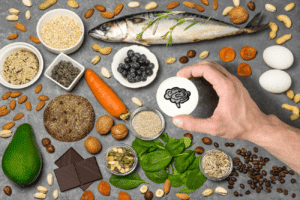Introduction
In today’s fast-paced world, where access to a balanced diet is not always readily available, food fortification has emerged as an effective strategy to combat nutritional deficiencies. Food fortification involves the addition of essential nutrients to staple foods, thereby enhancing their nutritional value and promoting overall health. This article delves into the concept of food fortification, its significance, and provides examples of fortified foods that have made a positive impact on public health.
Understanding Food Fortification
1. What is Food Fortification?
Food fortification is the process of deliberately adding key vitamins, minerals, or other essential nutrients to foods during their processing or production. The aim is to address specific nutrient deficiencies and improve the nutritional quality of the food consumed by the general population.
2. The Significance of Food Fortification
Food fortification plays a crucial role in addressing widespread nutritional deficiencies, especially in regions where access to a diverse range of foods is limited. It has the potential to reach large segments of the population, making it an effective public health intervention.
3. Types of Fortified Nutrients
Various nutrients can be added to foods during fortification, including:
- Vitamin A: Often added to staple foods like rice, flour, and cooking oil to combat vitamin A deficiency, which can lead to vision problems and weakened immunity.
- Iron: Fortified in foods like cereals, bread, and pasta to combat iron deficiency anemia, a prevalent global health issue.
- Iodine: Added to salt to prevent iodine deficiency, which can cause thyroid-related problems.
- Folic Acid: Fortified in grains to reduce the risk of birth defects and support maternal health.
4. The Science Behind Food Fortification
Food fortification is a science-based process that requires careful consideration of the nutrient’s stability, bioavailability, and the food matrix. The goal is to ensure that the added nutrient remains stable throughout the product’s shelf life and is easily absorbed by the body when consumed.
Examples of Fortified Foods
1. Fortified Milk
Fortified milk is a common example, where essential vitamins like A and D are added to enhance its nutritional value. This helps in promoting stronger bones and a healthier immune system.
2. Fortified Breakfast Cereals
Many breakfast cereals are fortified with essential vitamins and minerals such as iron, folic acid, and various B vitamins. This makes them a convenient and tasty way to incorporate important nutrients into one’s diet.
3. Iodized Salt
Iodine deficiency can lead to severe health issues, but the addition of iodine to table salt has significantly reduced this problem. Iodized salt is now widely used in households and processed food manufacturing.
4. Fortified Cooking Oils
Cooking oils are often fortified with vitamins, such as vitamin A, which is essential for maintaining healthy vision and skin.
5. Fortified Flour
Flour is frequently fortified with essential nutrients like iron and folic acid, which are crucial for red blood cell production and fetal development.
6. Fortified Juices
Certain fruit juices are fortified with additional vitamins and minerals to make them more nutritious and appealing to consumers.
7. Fortified Baby Formula
Infant formula is fortified to provide all the necessary nutrients required for a baby’s growth and development.
Conclusion
Food fortification is a powerful tool in the fight against malnutrition and nutrient deficiencies. By strategically adding vital nutrients to commonly consumed foods, we can significantly improve public health and well-being. It is essential to continue research and investment in food fortification programs to ensure that all individuals have access to the necessary nutrients for a healthy life.
FAQs (Frequently Asked Questions)
1. Is food fortification safe?
Yes, food fortification is considered safe when done following strict guidelines and scientific evidence. The levels of added nutrients are carefully regulated to prevent any adverse effects.
2. Can I solely rely on fortified foods for nutrition?
While fortified foods can help address nutrient deficiencies, it is essential to maintain a balanced diet and consume a variety of nutrient-rich foods for overall health.
3. Are there any cultural considerations when fortifying foods?
Yes, cultural preferences and dietary habits should be taken into account when implementing food fortification programs to ensure acceptance and effectiveness.
4. How does food fortification contribute to public health?
Food fortification can improve public health by reducing the prevalence of nutrient deficiencies and related health issues in a cost-effective and sustainable manner.
5. Are there any challenges in implementing food fortification on a global scale?
Yes, challenges include monitoring and evaluating the impact of fortification, reaching remote populations, and addressing potential opposition or misconceptions about fortified foods.




